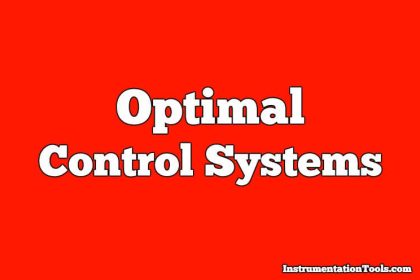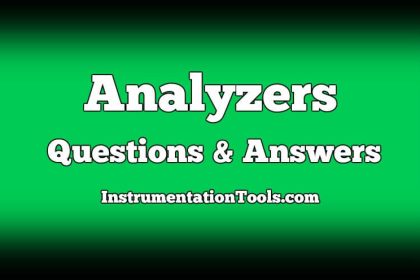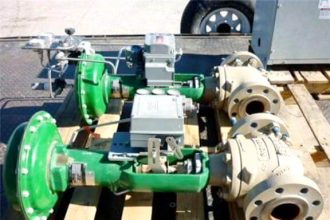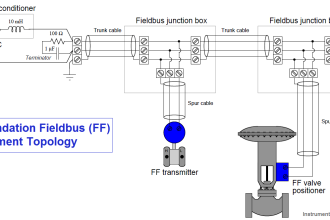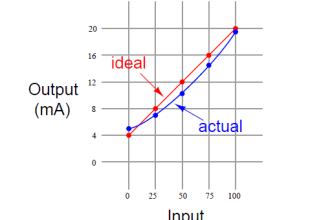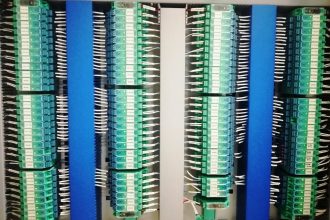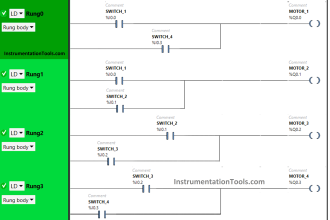Stability Analysis
1. First column elements of the Routh’s tabulation are 3, 5, -3/4, ½, 2. It means that there are:
a) Is one root in the left half of s-plane
b) Are two roots in the left half of s-plane
c) Are two roots in the right half of the s-plane
d) Is one root in the right half of s-plane
Answer: c
Explanation: Routh hurwitz criteria is used to find the stability of the system and this is determined by the number of roots in which the number of roots is equal to the number of sign changes.
2. Assertion (A): Feedback control system offer more accurate control over open-loop systems.
Reason (R): The feedback path establishes a link for input and output comparison and subsequent error correction.
a) Both A and R are true and R is correct explanation of A
b) Both A and R are true and R is not correct Explanation of A
c) A is True and R is false
d) A is False and R is true
Answer: a
Explanation: Feedback control system offers more accuracy and also reduces the gain of the system and establishes the link for input and output comparison and subsequent error correction.
3. Consider the following statements:
a) The effect of feedback is to reduce the system error
b) Feedback increases the gain of the system in one frequency range but decreases in the other
c) Feedback can cause a system originally stable to become unstable
d) Both a and c
Answer: d
Explanation: Feedback reduces error and can cause stable system to become unstable and also can make unstable system stable.
4. The Routh-Hurwitz criterion cannot be applied when the characteristic equation of the system contains any coefficients which is :
a) Negative real and exponential function
b) Negative real, both exponential and sinusoidal function of s
c) Both exponential and sinusoidal function of s
d) Complex, both exponential and sinusoidal function of s
Answer: b
Explanation: The Routh-Hurwitz criterion cannot be applied when the characteristic equation of the system contains any coefficients which is negative real, both exponential and sinusoidal function of s.
5. The following characteristic equation results in stable operation of the feedback system s3+4s2+10s+11=0
a) True
b) False
Answer: a
Explanation: Stable operation can be checked using the Routh-Hurwitz criterion where the first row of the the table is checked and with that.
6. Consider the following statements:
Routh-Hurwitz criterion gives:
1. Absolute stability
2. The number of roots lying on the right half of the s-plane
3. The gain margin and the phase margin
a) 1,2 and3
b) 1 and 2
c) 2 and 3
d) 1 and 3
Answer: b
Explanation: Routh-Hurwitz criterion gives absolute stability and number of roots lying on the right half of the s-plane.
7. The given characteristic equation s4+s3+2s2+2s+3=0 has:
a) Zero root in the s-plane
b) One root in the RHS of s-plane
c) Two root in the RHS of s-plane
d) Three root in the RHS of s-plane
Answer: c
Explanation: The stability analysis is done using Routh-Hurwitz criterion and hence the number of roots on the right is calculated.
8. Which of the following techniques is utilized to determine at the actual point at which the root locus crosses the imaginary axis?
a) Nyquist technique
b) Routh-Hurwitz technique
c) Nichol’s technique
d) Bode technique
Answer: b
Explanation: Routh-Hurwitz technique is utilized to determine at the actual point at which the root locus crosses the imaginary axis.
9. The characteristic equation of a control system is given by s6+2s5+8s4+12s3+20s2+16s+16=0 . The number of the roots of the equation which lie on the imaginary axis of s-plane:
a) 0
b) 2
c) 4
d) 6
Answer: c
Explanation: The stability analysis is done using Routh-Hurwitz criterion and hence the number of roots on the right is calculated.
10. Assertion (A): A linear, negative feedback control system is invariable stable if its open loop configuration is stable
Reason (R): the negative feedback reduces the overall gain of the feedback.
a) Both A and R are true and R is correct explanation of A
b) Both A and R are true and R is not correct Explanation of A
c) A is True and R is false
d) A is False and R is true
Answer: d
Explanation: A linear, negative feedback control system is not necessarily stable if its open loop configuration is stable.
